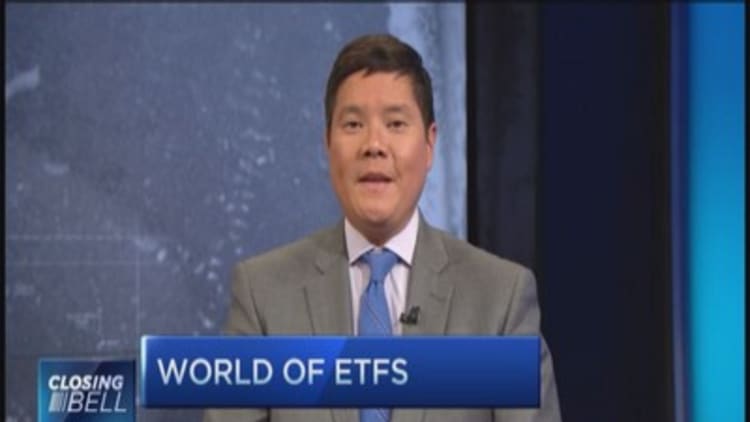
The exchange-traded fund industry is about to reach a major milestone.
Over the next few days—maybe as early as Friday—ETFs as a category will pass $2 trillion in assets. The accomplishment serves as a mighty rebuke of the mutual fund industry as investors during this five-year bull market wholeheartedly rejected active management.
After a $42 billion inflow for November, ETFs are less than $3 billion away from the $2 trillion mark, according to XTF.com, which calculates the asset total at the end of each day.
Comparatively, mutual funds added just $12 billion last month, as investors are clearly choosing ETFs as the vehicle to ride this stock market to higher and higher record highs.
Read MoreETFs minted to court the bullish U.S. dollar
November was the fourth-largest month for ETF inflows in the last decade, according to XTF.com.
"ETFs are a reminder that 'disruptive technology' isn't just for Silicon Valley," wrote Nicholas Colas of Convergex Group, in a note to clients this week. "It happens in our business as well."
Over the last five years, investors put $301.5 billion into U.S. equity ETFs, while pulling $411.1 billion out of mutual funds, according to Colas.
ETFs give investors the ability to trade a whole basket of equities as easily as a single stock. Also scoring points with investors are their low fees, tax advantages and transparency. It all began in 1993 with the S&P 500 SPDR, known as "The Spider," which tracks the whole index pretty much exactly.
Read MoreBullish bound in gold ETF?
It hasn't helped that active investing is having another brutal year. Just 9 percent of U.S. equity mutual funds are beating the S&P 500 this year, according to the Wall Street Journal.
ETFs "are the Uber of capital markets, pairing lower costs and convenience to offer a service previously associated with wealthier consumers," said Colas, who started his career on Wall Street in the mailroom of a mutual fund company in 1984.
"Mutual funds … were the same in their day," he said.
Read More
The creation of new ETFs this year aided in the industry's march to $2 trillion. Some 190 new ETFs hit the market in 2014, the second most in history, according to XTF.com. Only 2007 saw more, with 200 new funds. (With one month to go, it's possible 2014 will surpass the record of seven years ago.)
The industry still has a long way to go to top mutual funds in total assets. Mutual funds hold $15.8 trillion, according to the Investment Company Institute.
But they have just cracked the golden goose for mutual funds: the massive 401(k) complex. In February, Charles Schwab launched access to ETFs in the retirement plans they service for more than 1 million workers. It is the first major 401(k) custodial firm to do so.
What's more, the industry is about to hit mutual funds right where it hurts through the launch of a new class of actively managed ETFs. Last month, regulators approved so-called nontransparent ETFs proposed by Eaton Vance. The hybrid funds will feature active stock picking like a mutual fund, but will list and trade like an ETF.
The crucial part was that the SEC said Easton Vance does not need to disclose the holdings of the funds daily, which is the rule for all other ETFs.
"If this patent that Eaton Vance got takes off, there's no reason for mutual funds to exist in their current form." said Richard Radnay, chief information officer at XTF.com.





